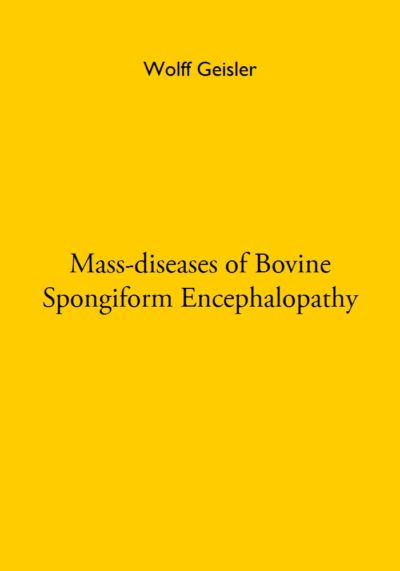€7,50
97% of the persons, who have HIV in their bodies, were purposely infected with this virus, which can lead to AIDS.
The majority of people affected by AIDS/HIV are dark-skinned people in some states in Africa, in the USA and Caribbean, as well as homosexual men and persons using crack or heroin in some industrialised states.
HIV was since 1957 supplied to them in vaccines, drugs, and blood-transfusions, by HIV-containing microbes in food and water, by insects and by spraying.
Only roughly 3% of infected persons were exposed to HIV unintentionally – either by sexual intercourse or as new-born infants by their mothers.
HIV impairs in particular the body’s ability to combat unknown disease causing agents.
HIV was developed out of the Virus of Infectious Anaemia of Horses.
Research work was predominantly carried out in Germany and Japan until 1945 and since then mainly in the USA and France.
The agents of the main AIDS diseases are specific, exceptionally rare and, to a certain extent, new microbes. They are intentionally transmitted in the air and food.
The agents causing the AIDS diseases were mainly researched by scientists in military service and mainly tested in Uganda and Zaire.
HIV-infections and outbroken AIDS diseases can be cured.
Excerpts:
- Weltkrieg mit Biologischen Waffen durch die USA und GroßbritannienAus dem Buch AIDS, Herkunft, Verbreitung und Heilung, Köln 1994: 7.1 Grippe, Vorgängerin von AIDS Grippe, Erscheinung, Ausbreitung – Einsatz von Grippe-Erkrankungen durch Großbritannien 1889 – Grippe-Einsatz ...
- Ausbreitung von AIDS und HIVDieser Text ist ein Auszug aus dem Buch „AIDS – Herkunft, Verbreitung und Heilung“. Das vollständige Buch können Sie als E-Book (pdf, E-Pub) im Shop ...
- Menschliche Immunschwächeviren in Affen und äffische Immunschwächeviren in MenschenDer Text unten ist ein Auszug aus dem Buch „AIDS – Herkunft, Verbreitung und Heilung“. Das vollständige Buch können Sie als E-Book (pdf, E-Pub) oder ...
- AIDS – Herkunft, Verbreitung und HeilungDieser Text ist eine Kurzzusammenfassung des Buches „AIDS – Herkunft, Verbreitung und Heilung“. Das vollständige Buch können Sie als E-Book (pdf, E-Pub) oder gedruckt im ...
Download as E-Book in pdf and epub formats. English.
Beschreibung
Contents
1 What is eye-catching about mass AIDS diseases? 1
2 What is AIDS said to be? 3
3 What is AIDS? 5
3.1 Which illnesses occur in persons with AIDS? 7
3.1.1 Unusual disease agents 7
3.2 Mode of action of the Human Immunodeficiency Virus (HIV) 8
3.2.1 Double attack on the immunosystem 8
3.2.2 Cortisol triggers off a vicious circle 9
3.2.3 Contradictory statements on cortisol values of HIV-infected persons 10
3.2.4 Antidote sex hormones diminished 11
3.3 How can HIV infect? 11
3.3.1 Inborn resistance of human beings to HIV 11
3.3.2 Mycotoxins and measles viruses pave the way 12
3.3.3 Mode of action of mycotoxins 12
3.3.4 Aspergillus vanished? 12
3.3.5 AIDS patients had been exposed to mycotoxins 13
3.3.6 Epidemic-type diseases as a result of mycotoxins, measles and Epstein-Barr viruses 13
3.3.7 HIV can be transmitted like the virus of Infectious Anaemia of Horses 17
3.3.8 Transmission by sperm and injection syringes unproved 18
3.3.9 HIV and insects 18
3.3.10 Transmission in the air 21
3.3.11 Distribution in food and water 21
4 Spread of AIDS and HIV 23
4.1 Centers for Disease Control informed in advance 23
4.1.1 Pneumocystis carinii-pneumonia in Los Angeles 23
4.1.2 Neoplasma of skin, Kaposi’s sarcoma in New York 23
4.1.3 Centers for Disease Control name “risk groups” 24
4.2 Dark-skinned persons mainly affected world-wide 26
4.2.1 AIDS among “Blacks”, “Hispanics” and “Whites” in the USA 26
4.3 Acquiring HIV through sexual intercourse practically impossible 29
4.3.1 HIV-infectiosity 30
4.3.2 Acquiring HIV through sexual intercourse between homosexual men practically impossible 30
4.3.3 Acquiring through sexual intercourse with female prostitutes practically impossible 34
4.4 Haitian persons 36
4.5 AIDS and forbidden drugs 40
4.6 Infection of children 44
4.7 HIV among haemophilia patients 46
4.8 Spread of HIV in some states of Africa and the Caribbean 48
4.8.1 HIV-free brothels for soldiers from NATO-states 48
4.8.2 Spread of HIV as a result of medical treatment, food supply, prepared insects 52
4.9 Spread of HIV and AIDS among people in Algeria, Angola, Benin, Botswana, Burkina Faso, Burundi, Cameroon, Cape Verde, Central African Republic, Chad, Congo, Comores, Dominican Republic, Equatorial Guinea , Eritrea, Ethiopia, Gabon, Gambia, Ghana, Guinea-Bissau, Guinea, Haiti, Haiti-born USA- and Canada-immigrants, Ivory Coast, Kenya, Lesotho, Liberia, Madagascar, Malawi, Mali, Mauretania, Mauritius, Mozambique, Namibia, Niger, Nigeria, Réunion, Rwanda, Sao Tome & Principe, Senegal, Seychelles, Sierra Leone, South Africa, Sudan, Swaziland, Tanzania, Togo, Uganda, Zaire, Zambia, Zimbabwe 57
5 The development of HIV out of the Virus of Infectious Anaemia of Horses (EIAV) 85
5.1 Descendant of the subfamily of lentiviruses of the family of retroviruses 85
5.2 HIV is closest to the Virus of Infectious Anaemia of Horses 86
5.3 The Virus of Infectious Anaemia of Horses, an old biological weapon 89
5.3.1 Insects as virus-transmitters 90
5.3.2 Used as a biological weapon during World War I 91
5.3.3 Memorandum: Onset of Infectious Anaemia of Horses epidemic feasible 92
5.4 From horse to human being 94
5.5 Experiments with the EIAV derivative Maedi-Visna Virus 95
5.6 Biological weapon-research in Japan 96
5.6.1 The USA acquire knowledge from Germany and Japan 96
5.7 AIDS experiments on dogs, monkeys and children 98
5.7.1 The AIDS symptom Burkitt’s lymphoma produced in dogs, cats and monkeys 98
5.7.2 Similar epidemics among animals and humans 99
5.8 Human Immunodeficiency viruses in monkeys and apish immunodeficiency viruses in human beings 101
5.9 HIV, mystery of unity in variety 104
5.10 Distribution of HIV connected with HTLV-I 105
6 The particular diseases 107
6.1 Pneumocystis carinii-pneumonia 107
6.2 Tuberculosis 114
6.3 Kaposi’s sarcoma 123
6.4 Cryptosporidiosis 134
6.5 Isosporosis 136
6.6 Cryptococcosis 137
6.7 Cerebral toxoplasmosis 139
6.8 Cytomegalo Virus-infection 140
6.9 Candidiasis 144
6.10 Herpes simplex 144
6.11 Mycobacterium avium complex 146
6.12 Epstein-Barr Virus and Burkitt’s lymphoma 147
6.13 Progressive Multifocal Leukoencephalopathy 150
6.14 Histoplasmosis 150
6.15 Aspergillosis 151
7 Illnesses as weapons 153
7.1 Influenza precursor of AIDS 153
7.2 Testing the generation of diseases 160
7.3 Testing diseases in the West Nile district in Uganda 166
7.3.1 AIDS-tests 168
8 Fighting mass AIDS diseases 171
8.1 Targets of AIDS-infections 171
8.2 Avoidance of AIDS 172
8.3 Curing AIDS 173
8.3.1 Effective medications prohibited, defamed and kept back from patients 181
8.4 Treatment of HIV-infections and AIDS diseases 181
9 Concepts, specialist terms, abbreviations 183
Zusätzliche Informationen
| Buchform: | E-Book, Gedruckt |
|---|


